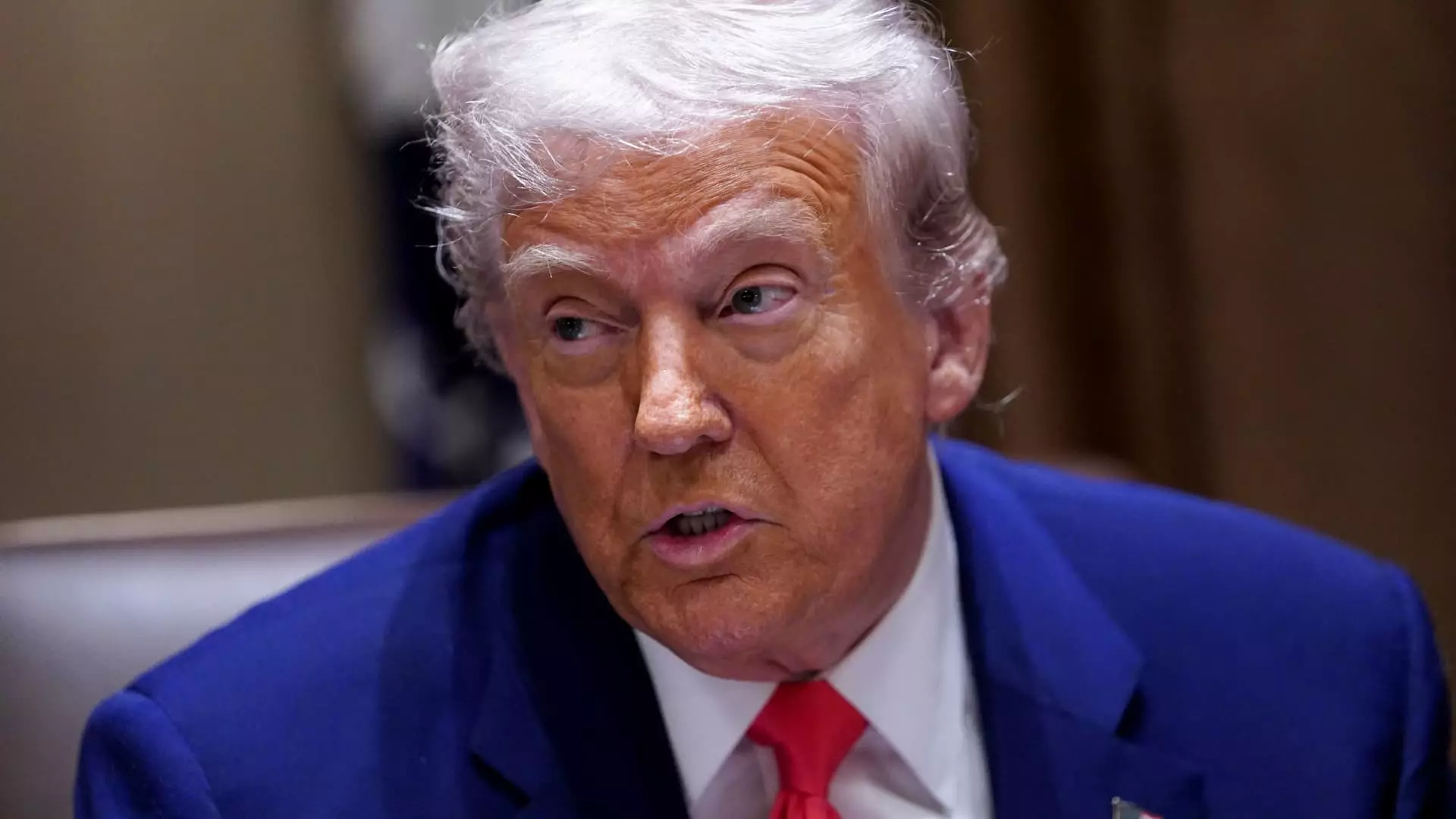In a striking move that reveals the dire state of international trade relations, President Donald Trump’s decision to implement a staggering 145% tariff on Chinese imports marks a profound shift towards economic isolationism. This radical policy, as highlighted by economist Erica York, is not merely an adjustment; it’s a potential annihilation of trade between the United States and China. Such tariffs are not just burdensome—they are a historical recurrence of folly that could plunge both nations into a debilitating trade war, rekindling economic strains we thought long behind us.
Trump’s latest tariff escalation is reminiscent of the protectionist policies that contributed to the Great Depression. By essentially dictating terms of trade that could lead to a scarcity of goods and services, the administration is not only risking short-term economic turbulence but is also jeopardizing long-term relationships with one of the world’s largest economies. In a world increasingly defined by interconnectivity, these isolationist strategies threaten to unravel a delicate balance of global commerce cultivated over decades.
A Tipping Point for the Market
Recent market fluctuations underscore the uncertainty that has gripped investors since the announcement of these new tariffs. Following a brief surge in market confidence, Thursday’s downturn echoed York’s warning that “the market still isn’t in the clear.” As news broke of the tariff increase, Wall Street felt an immediate jolt, erasing gains within hours. This volatility reflects not only investor apprehension but also the broader unease surrounding the unpredictable nature of U.S. trade policy under this administration.
The immediate economic implication of such high tariffs is crystal clear: significant cost increases for American consumers. With a reported hike in the average tariff rate to heights unseen since the 1940s, Americans face the stark reality of higher prices for everyday goods. With many companies lacking viable alternatives to imported products, these costs will inevitably be passed down to consumers, resulting in what will likely be a nationwide price squeeze on everything from electronics to apparel.
The Economic Dystopia of Tariff Policies
Trump’s tax policies have redefined the notion of fiscal responsibility in America. The Tax Foundation projected an increase in federal tax revenues of an eye-watering $171.6 billion due to the newly imposed tariffs. This figure is more than just a statistic; it signifies the largest tax increase since 1993. Ironically, what Trump touted as a rebirth of economic growth is shaping up to be a deeply flawed financial strategy that disproportionately burdens average citizens.
By choosing to cement such severe tariffs, Trump has firmly cast himself in the role of protectorate, but at what cost? The archaic belief that isolation will provide security overlooks the lessons of history. As China retaliates with its own increased tariffs—raising them from 34% to 84% on U.S. imports—we witness a staggering contest of economic titans. The administration’s stance seems to indicate no willingness to negotiate or find common ground, opting instead for escalating measures that lack a coherent long-term strategy.
A Trade War with No Winners
As tariffs rise, the underlying message becomes painfully clear: this is a trade war with devastating implications for everyday Americans and for businesses striving to survive amidst chaotic policy shifts. Retailers are left grappling with how to maintain the affordability of their products when faced with astronomical import costs. Not only does this result in layoffs and a potential downturn in consumer spending, but the rise in commodity prices can trigger inflationary pressures across the board.
In this veering trajectory, the belief that protectionism will somehow shield the American economy from external pressures crumbles under scrutiny. Trade has long been a cornerstone of economic prosperity; the shift towards nationalism and isolationism demonstrates a worrisome drift away from economic collaboration. As history shows, this path could lead to a chain reaction of disastrous consequences, echoing the economic failings of the past.
The ramifications of Trump’s 145% tariffs could be far-reaching and long-lasting, affecting not only the current market landscape but also the very foundation of global trade. Rather than fostering growth, this iron-fisted approach to tariffs is more likely to lead the nation down a perilous path of economic despair, challenging the virtues of an interconnected world.

